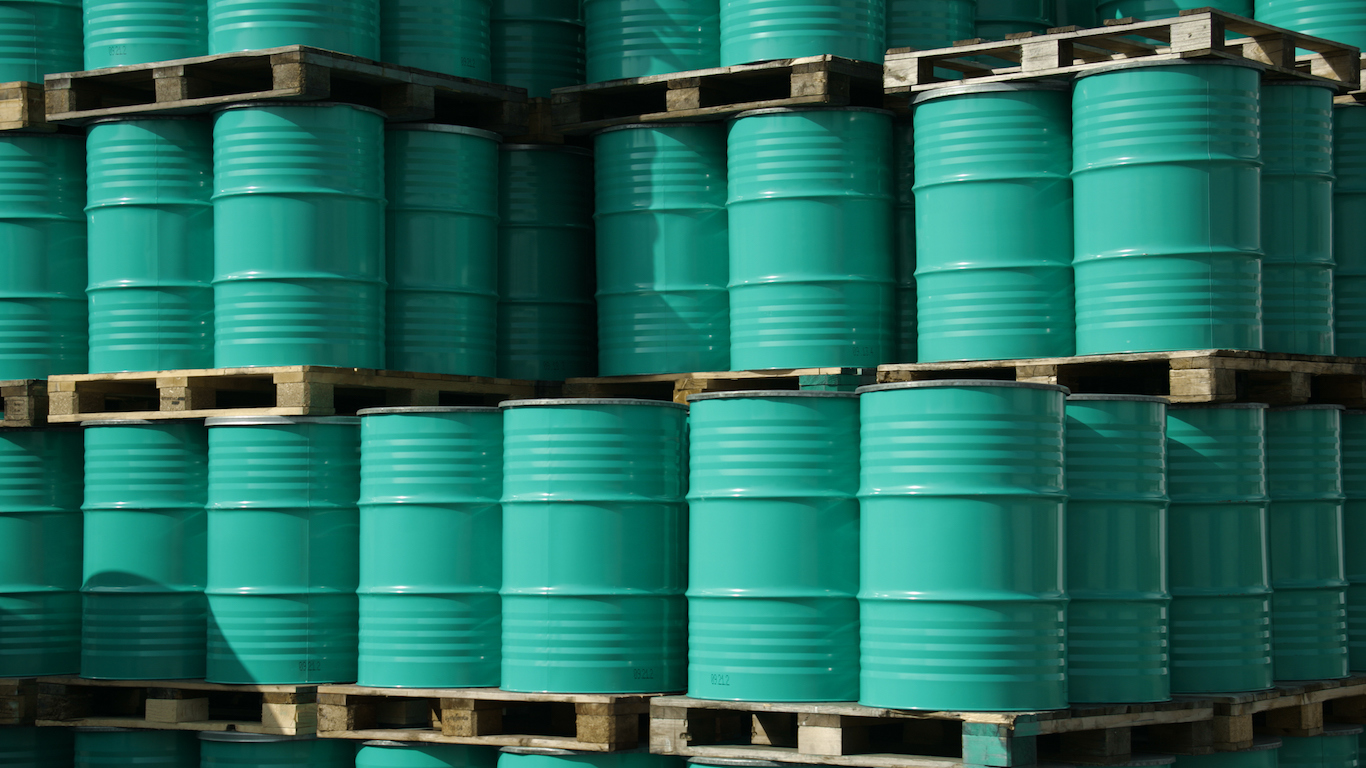
The U.S. Energy Information Administration (EIA) released its weekly petroleum status report Wednesday morning showing that U.S. commercial crude inventories increased by 6.8 million barrels last week, maintaining a total U.S. commercial crude inventory of 414.2 million barrels. The commercial crude inventory is about 1% above the five-year average for this time of year.
Tuesday evening the American Petroleum Institute (API) reported that crude inventories dropped by 3.7 million barrels in the week ending August 10. Gasoline inventories decreased by 1.6 million barrels and distillate stockpiles rose by about 1.9 million barrels. For the same period, analysts expected crude inventories to decrease by about 2.5 million barrels. Gasoline inventories were seen down by 583,000 barrels and distillate inventories were expected to rise by 964,000 barrels.
Volatility is the name of the game in oil trading now. Prices rose Tuesday on reports that Saudi Arabia was lowering production. Then this morning’s report from the EIA absolutely crushed the gain. A refinery run of 18 million barrels last week has got to be a multiyear, if not an all-time, high.
Total gasoline inventories decreased by 700,000 barrels last week, according to the EIA, and are now about 5% above the five-year average range. U.S. refineries produced about 10.2 million barrels of gasoline a day last week, up by about 300,000 barrels compared to the prior week. Total motor gasoline supplied (the agency’s proxy for demand) averaged 9.6 million barrels a day for the past four weeks, about 100,000 less compared with the prior week.
Before the EIA report, benchmark West Texas Intermediate (WTI) crude for September delivery traded down about 1.8%, at around $65.85 a barrel, and it dropped further to around $65.10 (down about 2.8%) shortly after the report’s release. WTI settled at $67.04 on Tuesday and opened at $66.69 Wednesday morning. The 52-week range on September futures is $47.64 to $72.98.
Week over week, U.S. crude oil exports fell by 258,000 barrels a day last week and U.S. production rose by 100,000 barrels a day to 10.9 million barrels. Exports averaged 1.59 million barrels a day last week and have a cumulative daily average for the year of 1.82 million barrels a day, a 138% increase over the year-ago export total.
Distillate inventories rose by 3.6 million barrels last week and are about 8% below the five-year average range for this time of year. Distillate product supplied averaged 3.9 million barrels a day for the past four weeks, down by about 100,000 compared with the prior week. Distillate production averaged 5.3 million barrels a day last week, up by 100,000 compared to the prior week’s production.
For the past week, crude imports averaged 9 million barrels a day, up by 1.08 million compared with the previous week. Refineries were running at 98.1% of capacity, with daily input averaging 18 million barrels a day, about 383,000 more than the previous week’s average. Exports of refined products rose by 75,000 barrels a day last week to 5.28 million.
According to AAA, the current national average pump price per gallon of regular gasoline is $2.857, down by less than a penny from $2.865 a week ago and down about two cents compared with the month-ago price. Last year at this time, a gallon of regular gasoline cost $2.35 on average in the United States.
Here is a look at how share prices for two blue-chip stocks and two exchange-traded funds reacted to this latest report.
Exxon Mobil Corp. (NYSE: XOM) traded down about 2%, at $76.69 in a 52-week range of $72.16 to $89.30. Over the past 12 months, Exxon stock has traded down about 1.7%.
Chevron Corp. (NYSE: CVX) traded down about 3%, at $118.85 in a 52-week range of $105.30 to $133.88. As of last night’s close, Chevron shares are trading up about 9.3% over the past year.
The United States Oil ETF (NYSEARCA: USO) traded down about 3.6%, at $13.49 in a 52-week range of $9.34 to $15.25.
The VanEck Vectors Oil Services ETF (NYSEAMERICAN: OIH) traded down about 5.2%, at $23.51 in a 52-week range of $21.70 to $29.87.
The Average American Has No Idea How Much Money You Can Make Today (Sponsor)
The last few years made people forget how much banks and CD’s can pay. Meanwhile, interest rates have spiked and many can afford to pay you much more, but most are keeping yields low and hoping you won’t notice.
But there is good news. To win qualified customers, some accounts are paying almost 10x the national average! That’s an incredible way to keep your money safe and earn more at the same time. Our top pick for high yield savings accounts includes other benefits as well. You can earn up to 3.80% with a Checking & Savings Account today Sign up and get up to $300 with direct deposit. No account fees. FDIC Insured.
Click here to see how much more you could be earning on your savings today. It takes just a few minutes to open an account to make your money work for you.
Our top pick for high yield savings accounts includes other benefits as well. You can earn up to 4.00% with a Checking & Savings Account from Sofi. Sign up and get up to $300 with direct deposit. No account fees. FDIC Insured.
Thank you for reading! Have some feedback for us?
Contact the 24/7 Wall St. editorial team.




